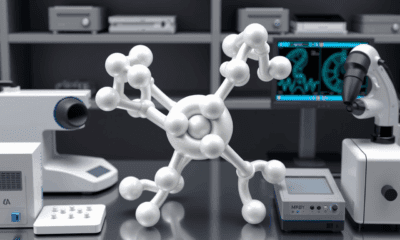While we try to keep things accurate, this content is part of an ongoing experiment and may not always be reliable.
Please double-check important details — we’re not responsible for how the information is used.
Engineering
Unveiling the Secrets of Superfluid: Scientists Reveal How Dipolar Interactions Shape Two-Dimensional Superfluid Behavior
An international team of physicists has made a significant observation of the BKT phase transition in a 2D dipolar gas of ultracold atoms. This groundbreaking work marks a major milestone in understanding how 2D superfluids behave with long-range and anisotropic dipolar interactions.

Batteries
“Revolutionizing Energy Storage: AI-Driven Discovery of New Materials for Multivalent-Ion Batteries”
AI is helping scientists crack the code on next-gen batteries that could replace lithium-ion tech. By discovering novel porous materials, researchers may have paved the way for more powerful and sustainable energy storage using abundant elements like magnesium.
Chemistry
Revolutionizing Magnetic Field Technology: A Breakthrough Design for MRI and Magnetic Levitation
Two German physicists have reimagined how to create powerful and uniform magnetic fields using compact permanent magnets. By overcoming the limitations of the well-known Halbach array, which works only with infinitely long magnets, they engineered innovative 3D magnet arrangements that work in practical, finite-size setups. Their designs not only boost field strength but also enhance homogeneity, verified through real-world experiments. This game-changing advancement could help bring affordable MRI technology to underserved regions and power applications like particle accelerators and magnetic levitation systems.
Batteries
Unlocking the Potential of Solid-State Batteries
Researchers have discovered that the mixing of small particles between two solid electrolytes can generate an effect called a ‘space charge layer,’ an accumulation of electric charge at the interface between the two materials. The finding could aid the development of batteries with solid electrolytes, called solid-state batteries, for applications including mobile devices and electric vehicles.
-

 Detectors8 months ago
Detectors8 months agoA New Horizon for Vision: How Gold Nanoparticles May Restore People’s Sight
-

 Earth & Climate9 months ago
Earth & Climate9 months agoRetiring Abroad Can Be Lonely Business
-

 Cancer9 months ago
Cancer9 months agoRevolutionizing Quantum Communication: Direct Connections Between Multiple Processors
-

 Albert Einstein9 months ago
Albert Einstein9 months agoHarnessing Water Waves: A Breakthrough in Controlling Floating Objects
-

 Earth & Climate9 months ago
Earth & Climate9 months agoHousehold Electricity Three Times More Expensive Than Upcoming ‘Eco-Friendly’ Aviation E-Fuels, Study Reveals
-

 Diseases and Conditions9 months ago
Diseases and Conditions9 months agoReducing Falls Among Elderly Women with Polypharmacy through Exercise Intervention
-

 Chemistry8 months ago
Chemistry8 months ago“Unveiling Hidden Patterns: A New Twist on Interference Phenomena”
-

 Agriculture and Food9 months ago
Agriculture and Food9 months ago“A Sustainable Solution: Researchers Create Hybrid Cheese with 25% Pea Protein”





























